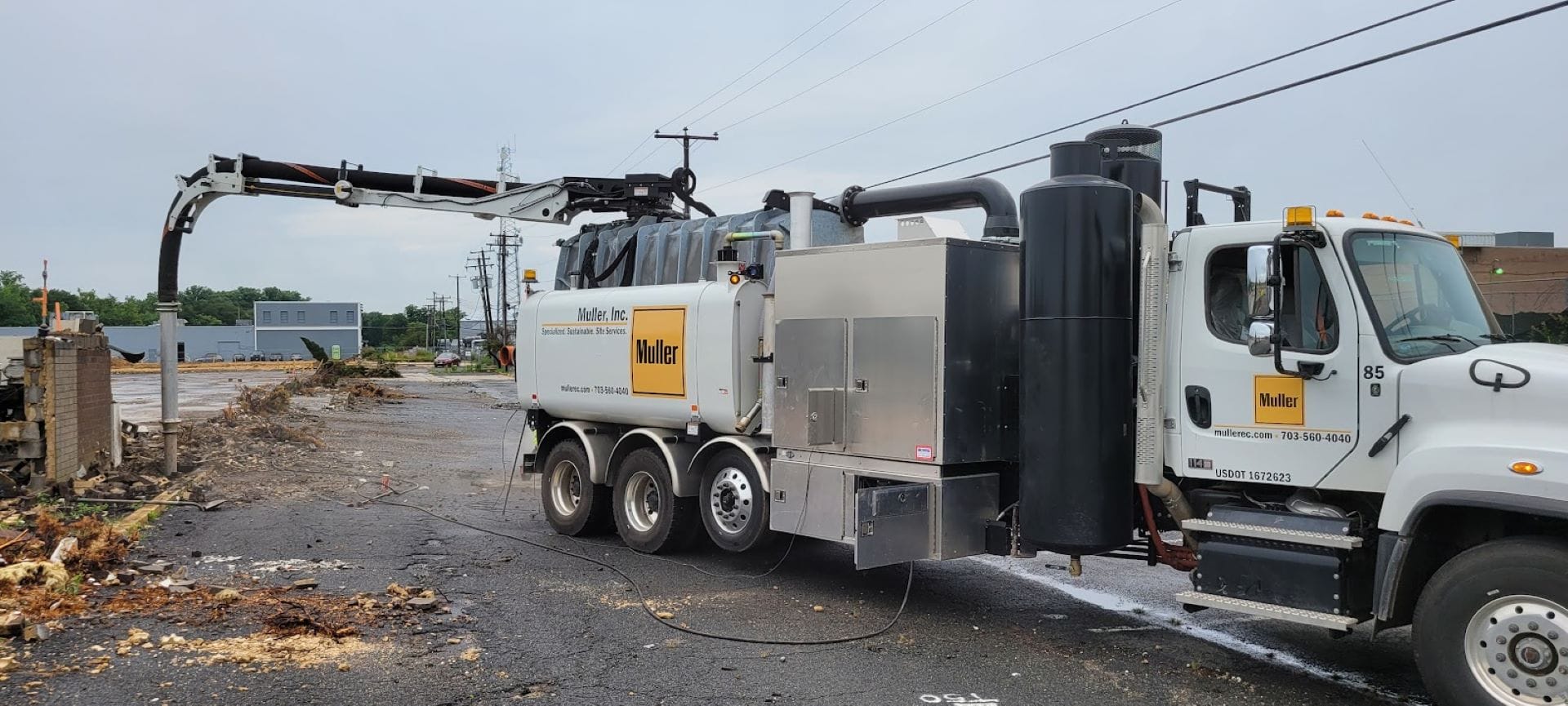One of the most efficient methods of excavation available today is hydro excavation. Developed in Canada, hydro excavation employs high-pressure water and an air vacuum to manipulate the ground with greater efficiency and precision.
This method of excavation has now become more commonplace in the United States, including Northern Virginia, Maryland, and the District of Columbia, to unearth and remove soil in areas laden with underground infrastructure as well as remote and urban areas.
There are five common uses for hydro excavation.
1. Daylighting or Potholing
Hydro excavation is often used for daylighting or potholing. Although potholing can be an effective way of installing the likes of fences, utility poles, and signposts, among other things, daylighting is the term given to the process of exposing underground pipes or utilities to daylight.
Hydro excavation has a number of advantages over traditional methods of excavation mostly related to the limited damage risk it poses. Conventional methods of excavation are often mechanical and very destructive, which can cause damage when underground lines or utilities are uncovered.
Hydro excavation also reduces the potential damage to the environment through its ability to displace debris and dirt in a safe manner. While traditional excavation methods create piles of debris on a worksite that must be dealt with, hydro excavation turns the soil it exposes into slurry, then suctions it away for off-site disposal.
2. Remote Digging
Remote areas pose a significant challenge for traditional excavation methods. Heavy equipment such as excavators and backhoes must first navigate narrow streets, overhead obstacles, and ever-changing road conditions. When heavy equipment can’t reach a site, manual digging is routinely employed, resulting in high labor costs and slow work rates.
Fortunately, hydro excavation can easily overcome these types of challenges. Jet Vac trucks and hydro excavation units are designed to navigate major roadways and back roads efficiently. These units also feature an extendable hose allowing the unit to be positioned some way from the point of excavation, vastly increasing convenience by cutting down on disruption and minimizing the restoration needs for the actual site.
Urban and congested work areas can also leverage the benefits of hydro excavation. Jet Vac trucks and hydro excavation units can comfortably traverse tight city streets and crowded work areas while minimizing the disruption to residents or other work activities.
3. Frozen Ground Excavating
Everything gets more complicated when the temperature drops, traditional excavation methods included. A simple excavation in colder months can quickly hit unexpected delays. Equipment failures, operator injuries, and project delays are commonplace when digging in colder weather.
On the other hand, hydro excavation has several advantages when digging in frozen ground. Since hydro excavation relies on high-pressure water, it can be heated in colder months to allow for excavation in frozen soil. It’s also typically conducted by a team of two operators, reducing the amount of labor required considerably. Additionally, the process helps minimize the physical stress experienced by heavy equipment operators and reduces the likelihood of equipment failure.
4. Removing Debris
Hydro excavation is also a highly efficient method of removing debris. The extreme accuracy of hydro excavation means that it is able to clear out specific areas and structures of debris with the use of highly pressurized water and a vacuum. This process sees the pressurized water blasted into the ground, turning the ground into a slurry which is then vacuumed and transferred to a holding tank for off-site disposal.
Places that normally require the removal of debris include the likes of demolition or construction sites, areas that need asphalt or concrete to be taken away, or areas with vegetation. Hydro excavation is perfect for use with sensitive, small and tight areas that require debris to be removed in a non-destructive manner.
5. Slot Trenching
Slot trenching refers to the digging of narrow trenches for the purpose of installing cables, pipes, posts, and signs, in addition to other underground utilities. Using mechanical slot trenching methods not only takes a lot more time but can also be dangerous and cause damage to the utilities.
Conventional methods of slot trenching are also incapable of digging trenches that are narrow enough, which means that further backfilling will be required that in turn increases material and labor costs.
Hydro evacuation, however, is able to dig accurate, thin trenches that will require little backfilling. The job will be performed not just more quickly but with greater accuracy and without being either labor-intensive or requiring the use of heavy equipment that can cause safety issues for laborers or members of the general public.
Hydro excavation also prevents the occurrence of system interruptions as existing lines can be repaired with little damage or disturbance. Hydro excavation makes it much easier to dig holes with different specs, cutting down the costs of backfilling, asphalt maintenance and patching, and concrete encasement.
There are many other uses for hydro excavation that are not mentioned in this short article. There is such a wide array of potential applications for hydro excavation precisely because it is a highly accurate technique that is highly convenient as well as non-mechanical and non-destructive in nature.
Muller, Inc.’s experienced hydro excavation crews operate throughout Northern Virginia, Maryland, and the D.C. Metro area. To schedule an excavation or request a proposal, call us at 703-560-4040 or complete the form on our website.

